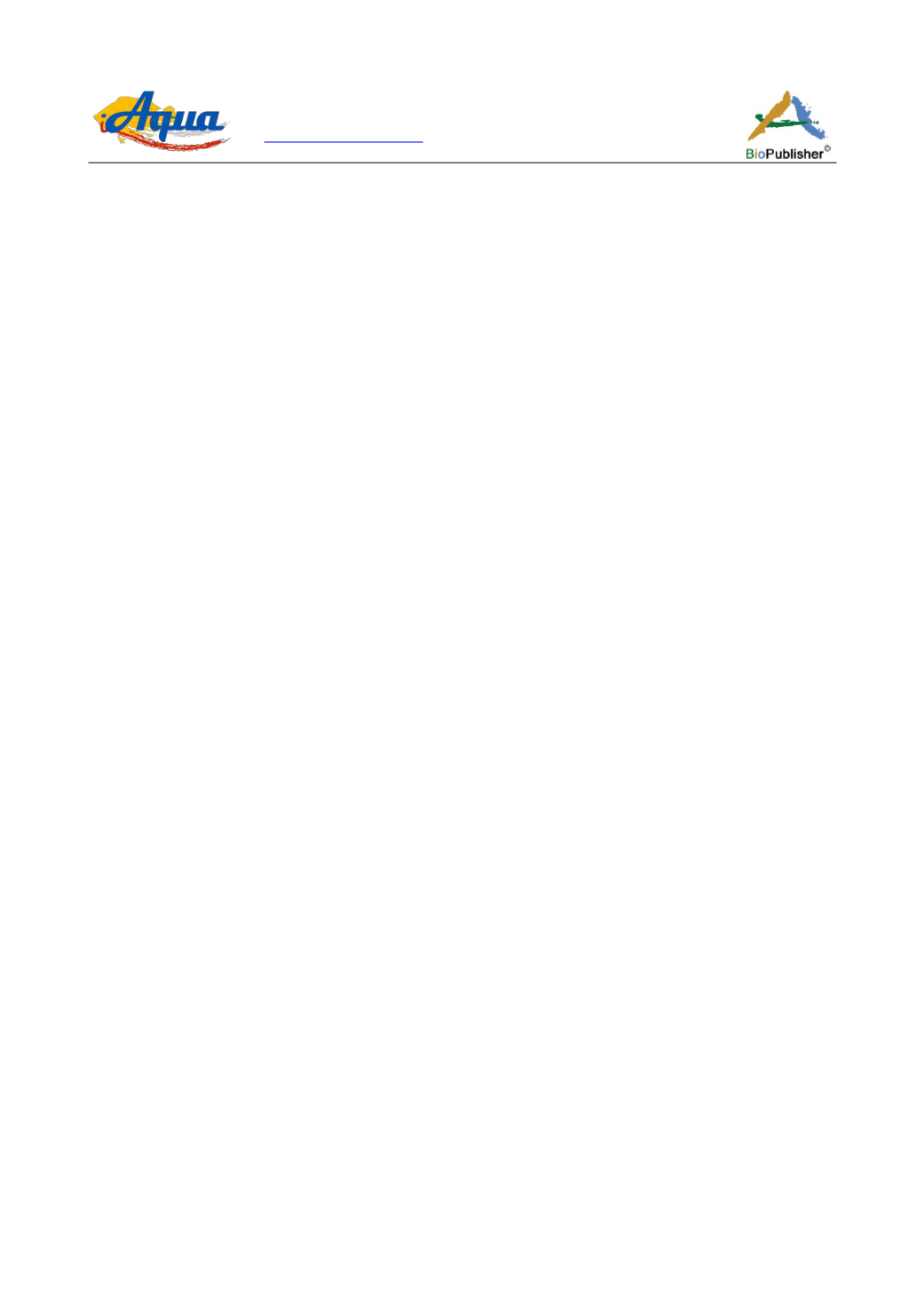
International Journal of Aquaculture, 2017, Vol.7, No.17, 112-121
113
plurispecific process of zooplankton production. Indeed, high production and survival rate of fish larvae are
realizable from a low cost production of nutritive algae and zooplankton (Sipaúba-Tavares et al., 2007). That is
the reason why, the aim of this study is to carry out the plurispecific production of fresh water zooplankton for
larvae of
Clarias gariepinus
and
Heterobranchus longifilis
. The study looks to evaluate the progression of
zooplankton density as a function of different doses of rabbit manure.
2 Materials and Methods
2.1 Experimental site
The experiment was conducted on the Diversification of Fish Farming Station of the Laboratory of Research on
Wetlands that is located in the Department of Zoology of the Faculty of Science and Techniques, University of
Abomey-Calavi (Benin). It is located between 6° 24' 53.3'' N; 2° 20' 18.5'' E and 6° 24' 53.4'' N; 18.5'' E and 9
m.a.s.l.
2.2 Experimental design
The experimental design is made of 18 plastic buckets of 80 L capacity each, exposed at free air on the previously
described site. For this purpose, seventy-two hours before experiment starting up, buckets were cleaned and
disinfected. It is made of six (06) treatments including one control such as: T
0
, T
1
, T
2
, T
3
, T
4
, T
5
corresponding
respectively to 0, 300, 600, 900, 1200, 1500 g of dry rabbit manure (RM) in one (01) m
3
of water replicated thrice.
Buckets were filled with 40 liters of demineralized water and immediately fertilized. Manures are from rabbits fed
with a low price diet but provided good performances on rabbits rearing (Adande et al., 2017; in press) and is
made of 2% of dried cassava, 30% of maize bran, 10% of palmist cake, 10% of soya cake, 5% of cotton cake, 2%
of shell, 10% of malt, 5% of beer yeast, 10% of
Panicum maximum
and 1% of salt. Manures contained 15.02%,
1.26% and 0.84% of N, P and K respectively.
2.3 Phytoplankton seeding process
After fertilizing, production areas were left for three days in order to enable nutrients releasing by washing so that
they will be available to phytoplankton (microalgae). After this period, areas were seeded with phytoplankton
according to Agadjihouèdé et al. (2010) and Akodogbo et al. (2015) by transferring ten (10) liters of polyculture
(
Clarias
and
Tilapia
) pond water previously filtered with plankton net of 25 µm mesh to eliminate zooplankton.
2.4 Zooplankton seeding process
Zooplankton was seeded three (03) days after microalgae seeding, otherwise six days after fertilizing. Indeed,
according to Guiral et al. (1994), this period is sufficient for microalgae development. To harvest zooplankton,
three hundreds (300) liters of the previous pond were filtered with a net of 25 µm, and then concentrated in 500
mL of water. Each bucket was seeded with 25 mL of this filtrate. A sub-sampling of 50 mL was taken and
formolled in order to perform individuals counting and zooplankton diversity study. The initial seeding density
was 26 ± 0.23 ind/L otherwise (5 ± 0.13 ind/L nauplii of copepods (
Thermocyclops sp.
), 4 ± 0.23 ind/L adults of
copepods (
Thermocyclops sp.
), 2 ± 0.14 ind/L of cladocerans (
Moina sp.
and
Daphnia sp.
) and 15 ± 0.41 ind/L of
rotifers (
Brachionus sp
. and
Asplanchna sp.
). These three great groups of zooplankton are generally phytophage.
According to Sprules (1980) and Pourriot et al. (1982), a great number of copepods become carnivorous at a given
stage of their development. After its seeding on day 0 (D
0
), zooplankton growth in different treatments was
monitored every three days, at 8 a.m., for 24 days. During this period, a sampling was carried out every three days
in order to follow biomass progression. Each sampling of zooplankton was preceded by homogenization of the
culture, and then a taking of five (05) liters of water that are filtered with plankton net (25 µm mesh). The harvest
was preserved according to Ara (2001) with 4-5% of formol in bottles of 100 mL until its analysis.
2.5 Image capture and zooplankton counting
Zooplankton counting was carried out according to Liady et al. (2015), by image treatment using Image Pro-Plus
®
software (Figure 1). Pictures were first captured from a microscope Optim Jeulin (X10) equipped by a photograph
device (Figure 2). The technique of image treatment offering possibility to enlarge images during counting
process enabled to distinguish easily rotifers from 120 µm. Different individuals of zooplankton were counted


